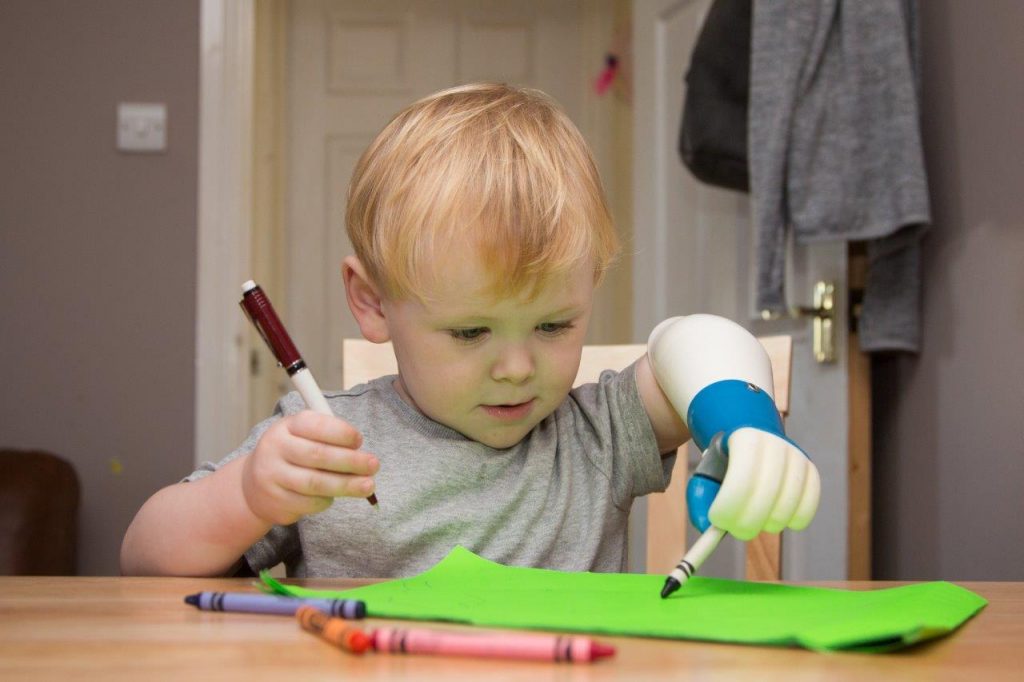Infant developmental research shows that children under the age of two are more likely to naturally accept the use of an external prosthetic limb than those who are older. The problem is, at this age, children grow so quickly that it becomes uneconomical to fit them with a synthetic arm or leg. Some devices can also pose more dangers to the child, with sharp edges and moving parts.
Ben Ryan, a father and inventor in North Wales, launched Ambionics to combat these problems after his son Sol has to have his left arm amputated from the elbow down. The arms are made, in part, using Stratasys 3D printers, and operate using hydraulics rather than electrical gears and motors.
First launched in 2015, Ambionics has now entered clinical trials delivering the arms to 20 children all around the world. According to Ryan, “The trial moves us a significant step further forward towards the commercialisation of our technology which can be a real game-changer for children under the age of three.”
Achieving the child-friendly custom fit
The arm has been designed in part with the help of Autodesk’s award winning CAD software. Explaining the creation process, Ryan comments, “Each arm created is customised to the user from a 3D scan of their limb. Parents usually perform the scan at home while their children are asleep. Once this is done they send us the file. We clean up the scan data then design and supply test sockets followed by the full arm system.”
3D printing is a key part of Ambionics’ ability to make and fit the arms at a competitive rate. Ryan adds, “The NHS takes 11 weeks to convert the plaster cast of an arm into a wearable prosthetic, whereas Ambionics can produce one in less than five days. Scans are kept on file making it easy for replacement prosthetics to be produced through 3D printing.”

A second nature prosthetic
A hand shaped gripper on the arm is powered using a system of water-filled rubber sacks that are pushed by the wearer at corresponding pressure points under the arm, in the arm socket or the shoe. Learning how to use this system at such a young age means that use of the arm becomes a second nature.
Children chosen for the beta trial of the arms are mostly from the UK, but toddlers in Europe, Australia, Africa, Canada and South America will also benefit from this run. Additionally, Ambionics is seeking donations and fundraising to support ongoing research and development of the arms.
Demo of a previous draft of the Ambionics hydraulic arm. Clip via Ben Ryan on YouTube.
“A true game changer”
The project has been endorsed by a number of representatives from within medical, design and 3D printing industries. Dr. Louise Jones, 3D printing/Additive manufacturing lead at Knowledge Transfer Network, a network partner of Innovate UK, comments
“The proposition and creative genius of Ambionics in using 3D printing and new materials to the benefit of prosthetics has the potential to revolutionise the lives of thousands of children (and adults) in the U.K. alone.”
“I believe this product is a true game changer that creates a significant step change in the field of prosthetics.”
Stay up to date with the latest medical product development news and more: subscribe to the 3D Printing Industry newsletter, follow us on Facebook and like us on Twitter.
Register for 3D printing jobs here.
Featured image shows Ben Ryan with son Sol. Photo by: Iolo Penri


